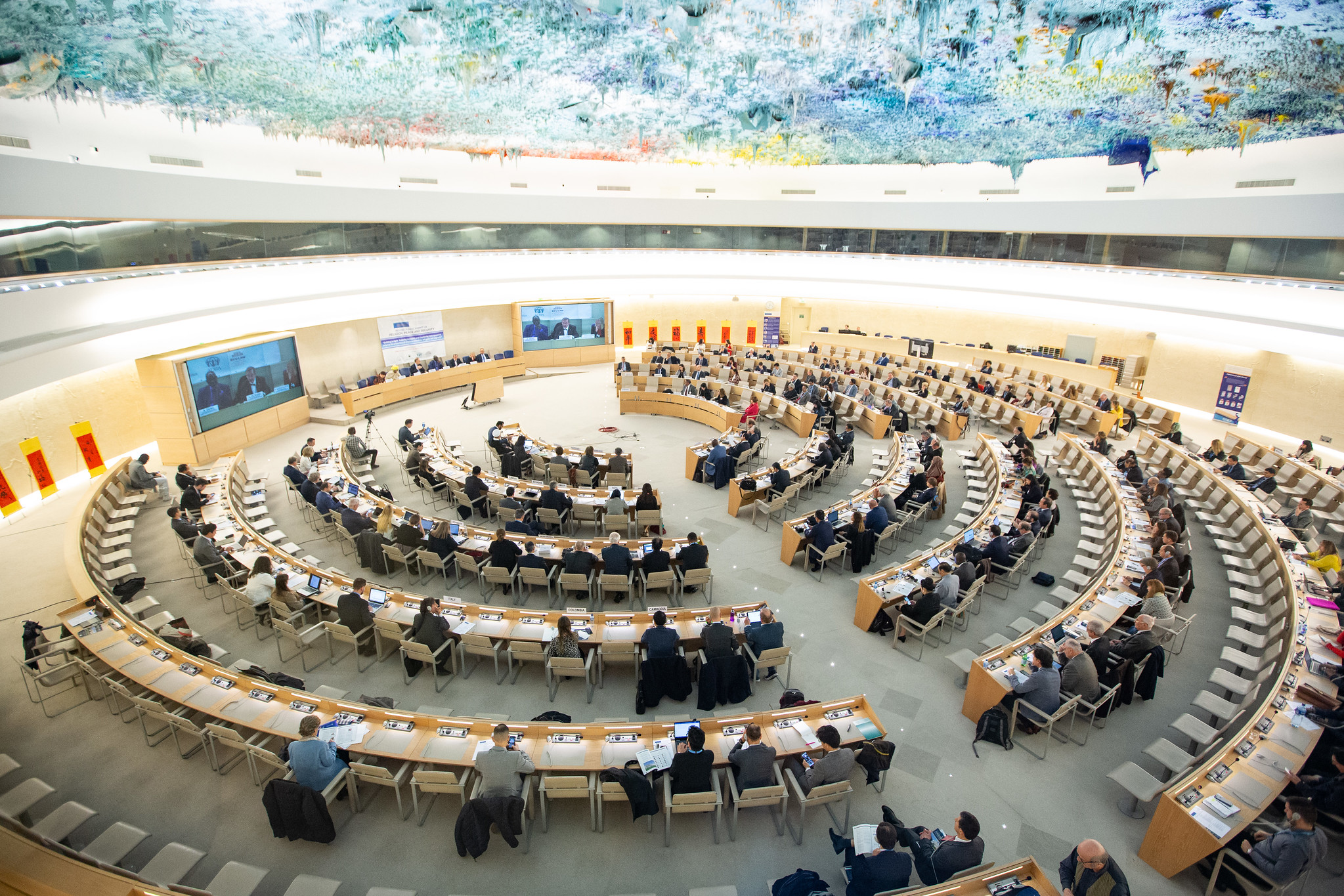Options for Protecting Refugees in South Asia
By Nafees Ahmad
South Asia is home to over 2.5 million refugees (75,927 in Afghanistan, 932,209 in Bangladesh, 197,122 in India, 21,467 in Nepal, 1,393,132 in Pakistan, and 820 in Sri Lanka). This poses unprecedented challenges to a region ill-equipped to deal with the contemporary refugee crisis. Conflicts in China, Iran, Myanmar, and other neighboring states have contributed to the displaced population. Also, a large number of refugees fleeing ethnic and racial conflicts in Afghanistan—the nation with the second largest population of refugees after Syria—pass through the region as they move towards Europe, with many choosing to settle in South Asia.
This Post examines the genesis, current scenario, and options for protecting refugees in South Asia in a legally-binding regional framework. Primarily, it focuses on the South Asian Association for Regional Cooperation (“SAARC”) as a forum to address the legally and socio-politically complex issues of refugees’ resettlement in South Asia.
The idea of refugee protection in South Asia is fluid and complex. Generally, the international refugee law (“IRL”) framework consists of international human rights law (“IHRL”), customary international law (“CIL”), international humanitarian law (“IHL”), and United Nations High Commissioner for Refugees (“UNHCR”) guidelines, along with the 1951 UN Convention relating to the Status of Refugees (“Refugee Convention”) and 1967 Additional Protocol. There have been many attempts by the SAARC scholars to establish regional refugee protection frameworks to manage the tide of refugee migration in South Asia. However, all such efforts have been stalled due to national security concerns, far-right nationalist propaganda, and religious discrimination, all of which undermine human security imperatives. Thus, there is clear need for a regional governance structure for refugee protection.
Global Refugee Protection Instruments
Nation-states have extended protection to people fleeing persecution since antiquity. The post-World War-II UN framework, as well as IHRL, aims to protect refugees. Article 14 (1) of the Universal Declaration of Human Rights (“UDHR”) stipulates the right to seek and enjoy asylum in other countries. Subsequently, regional refugee protection arrangements like Article 22 (7) of the American Convention on Human Rights and Article 12 (3) of African Charter on Human and Peoples’ Rights have extended similar protections.
Nevertheless, the Refugee Convention remains the principal international instrument that offers a dominant refugee definition. The Refugee Convention also establishes the core principle of non-refoulement, which prohibits states from returning refugees to their home countries if they are likely to face threats to their life or liberty. Furthermore, regional human rights treaties and national legislation have developed refugee status determination (RSD) procedures. However, these refugee instruments have their limitations, as every legal question in international refugee law has political ramifications.
The recent adoption of the Global Compact on Refugees (“GCR”) has presented many challenges to developing countries, which presently host 84% of refugees. SAARC countries already observe many IHRL instruments like the Convention on the Elimination of All Forms of Discrimination Against Women, Convention on the Rights of the Child, and Convention on the Elimination of All Forms of Racial Discrimination, all of which protect refugees in specific categories. The time has come for SAARC nations to also accede to the UN Convention Relating to Status of Stateless Persons and UN Convention on the Reduction of Statelessness.
Furthermore, no SAARC member state—other than Afghanistan—has become a party to the Refugee Convention and many of them wrongly perceive the Refugee Convention as an inappropriate imposition of a western model of refugee protection that does not fit well with South Asian refugee dynamics. The refugee scenario in South Asia does have distinct characteristics. South Asia witnessed a mass influx/exodus of refugees following the partition of Indian sub-continent in 1947 and that, subsequently, induced cycles of religious riots.
However, the current refugee situation requires the immediate ratification of the Refugee Convention by all SAARC states. The Convention remains the most comprehensive collection of international refugee norms in a legally-binding instrument. SAARC countries have been improperly treating refugees by not acceding to the Refugee Convention.
There are some challenges associated with ratifying the Refugee Convention. Ratification would necessitate a massive infrastructural build-up for refugee protection obligations. Some also argue that the radicalization of refugees has become the most visible challenge and that refugees have abused the Refugee Convention in the Global North by raising funds and building terror networks in their countries of origin. Further, Global North countries have arguably neglected the core principles of refugee protection due to the emergence of the right-wing nationalism. Citing these arguments, SAARC states contend that ratification to the Refugee Convention would not improve refugee protection.
However, several prominent scholars in South Asia have publicly called for ratification, including B.S. Chimni—who changed his old position of opposing the Refugee Convention in its current form and now advocates for ratification. He argues that acceptance of the Refugee Convention will boost refugee protection in the wake of India’s signing the GCR. Chimni is correct that the Refugee Convention, while imperfect, should be part of the refugee protection regime in South Asia.
A New Regional Instrument
There is also an urgent need for a focused, balanced, and diversified South Asia-specific regional refugee protection framework, focused on human rights and regional solidarity. It must incorporate the experiences of other regional structures on refugees. In South Asia, refugees are often discussed as a political issue rather than a humanitarian issue, making them vulnerable to targeted religion-driven hatred from a variety of actors. Therefore, I argue that such a regional legal framework must provide a South Asian-specific definition of refugee:
- Any person who is rendered homeless or stateless owing to well-established fear of being persecuted or displaced, on the grounds or reasons of gender, age, caste, creed, ethnicity, race, religion, social origin, language, nationality, political opinion, regionalism, natural calamities, indigenous existence, membership of a minority or a social group, socioeconomic ostracism, economic status or environmental conditions, militancy, insurgency, terrorism, organised & generalised violence, cultural intolerance, communalism, internal & external armed conflicts or external aggression, massive or serious violations of human rights, foreign domination or international intervention, or other events profoundly disrupting public order in either part or whole of his or her country of origin, nationality or homeland, out of country of origin or domicile, shall be a refugee.
- A person shall be a refugee if abused or deprived of life and personal liberty and rendered homeless or stateless contrary to his/her free will except according to the procedure and due process established by law.
There are a number of existing instruments in South Asia that could serve as building blocks for a broader regional framework. Many SAARC states have entered bilateral agreements, including the Rohingya refugee repatriation agreement between Bangladesh and Myanmar, a contract between India and Bangladesh on Chakma refugees, and a 1993 agreement between Afghanistan and Pakistan on Afghan refugees. Further, regional consultations on refugee protection were initiated in the 1990s by an Eminent Person Group (“EPG”) headed by late Chief Justice of India P.N. Bhagwati. These discussions resulted in a draft regional framework called the South Asian Declaration on Refugee and Migratory Movements in South Asia (“SADRMM”) in 2004. Unfortunately, SAARC governments did not show any serious interest in the SADRMM. Thus, they have been dealing with refugee protection needs under ad hoc and temporary arrangements, which hinders their ability to adhere to global standards of human rights.
I propose the development of a new refugee protection instrument, modeled off the SADRMM, entitled the South Asian Regional Framework Convention on Refugees (“SARFCR”).
Such an instrument could be based off of those adopted in other regions. For example, the Asian-African Legal Consultative Organization adopted the non-binding Bangkok Principles on Status and Treatment of Refugees in 1966. The Council of Europe System comprises relevant provisions of the European Convention on Human Rights, case law developed by the European Court of Human Rights, and EU Asylum Regulations and Directives collectively known as the Asylum Acquis. In Latin America, the 1984 Cartagena Declaration was adopted as a non-binding instrument for refugees.
The SARFCR should take into account the following recommendations.
- SARFCR must involve non-governmental organizations (“NGOs”), civil society organizations (“CSOs”), academics, governments, and other stakeholders in the process of researching and developing policies to protect all classes of refugees.
- SARFCR should combine elements of the Refugee Convention and GCR to create a hybrid model that addresses the regional peculiarities of South Asia. The Refugee Convention talks only of the rights of refugees and obligations of states, whereas GCR fills the gaps in the Refugee Convention by institutionalizing the core principles of humanity, global solidarity, burden-sharing, and supporting host countries.
- Under SARFCR, there should be a proactive review process to ensure protection of all classes of refugees, which should be carried out by a new South Asian Refugee Consultation & Review Group. This process must also be annually evaluated to document the success of protection practices.
- By utilizing academic expertise in IHRL, IRL, IHL, and CIL, SARFCR should also encourage the development of refugee leadership programs that provide specialized outreach tools to refugees of all classes.
- SARFCR should create a South Asian Regional Refugee Database that follows international data protection policies and is accessible to refugee rights stakeholders.
- Refugee protection research should be funded in institutes and universities in South Asia, with the aim of producing findings that are applicable both within and beyond South Asia.
Reforming Domestic Laws
In addition to ratifying these regional and global instruments, South Asian countries should also reform their domestic refugee protection laws. There is a growing global trend of negative, far-right perceptions about refugees, and South Asia is part of this phenomenon. Many South Asian governments have adopted religiously discriminatory refugee policies. Refugees from religious minorities are branded as a threat to internal security, political stability, and majority communities in SAARC states.
It is national protection that guarantees the human dignity of refugees under IHRL. In principle, a comprehensive and consolidated National Refugee Protection Act must address the plight of all displaced persons, including climate refugees. In the 1990s, several steps were taken at the NGO level when UNHCR formed the EPG for South Asia in 1994. UNHCR also started Annual Regional Consultations to develop the contours of a regional refugee regime. The aims and objectives of these regional consultations were to provide a platform for members of South Asian states to deliberate regional and national approaches for bolstering refugee protection.
At the 1996 Consultation in New Delhi, EPG made a case for a Model National Law (“MNL”) on refugees. At the 1997 Consultation in Dhaka, EPG approved the MNL as a stepping-stone for building a consensus to resolve the plight of refugees in the SAARC region. The MNL envisaged fair treatment to refugees based on the Third World Approaches to International Law, expansion of asylum grounds, and the emplacement of implementing machinery. The MNL improved significantly upon the 1951 Refugee Convention by incorporating additional grounds from other regional frameworks. The MNL also provides an enforcement body for refugee protection headed by the Refugee Commissioner and an appellate body called the Refugee Committee, as well as rules for RSD.
The MNL contemplates the rights and duties of refugees and provides appropriate procedures for managing the mass influx of refugees. It is imperative that all SAARC countries adopt the MNL.
Conclusion
SAARC states have historically opposed providing refugee protection under the Refugee Convention. As a result, South Asian refugee policy suffers from multi-layered protection gaps due to refugee policy volatility. This increases the urgency for adopting a new regional refugee protection framework, which I have laid out here as the SARFCR. Both the Refugee Convention and GCR must be regarded as blueprints for achieving SARFCR. Moreover, SAARC states need to reform their domestic laws to protect refugees by adopting the MNL put forward by the EPG.
The enormity of the refugee crisis in South Asia has been increasing daily and is likely to become a permanent feature of South Asian society. However, with these challenges come the potential for changes that might provide a better life for refugees in the region. NGOs and CSOs have been spearheading refugee protection leadership in the SAARC region. By engaging with SAARC governments, they could institutionalize their refugee protection vision through the adoption of SARFCR.
Nafees Ahmad is a Senior Assistant Professor in the Faculty of Legal Studies at South Asian University, New Delhi.







